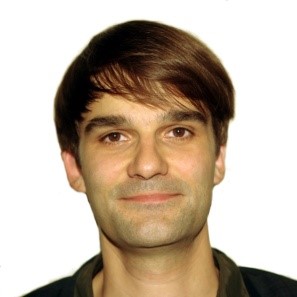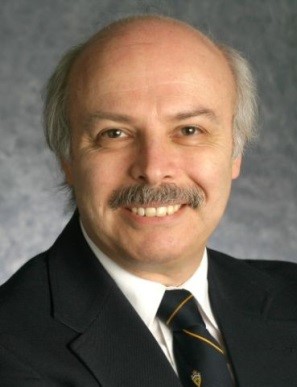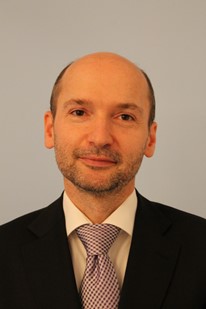Plenary Lectures:
Christof Gaiser
Physikalisch-Technische Bundesanstalt, Institut Berlin, Germany
The "New SI" - Temperature and the Boltzmann constant
 Christof Gaiser received his diploma degree in physics at the “Humboldt-Universität zu Berlin” in the field of optical and electrical properties of semiconductors in 2003. Since 2004 he is with the Physikalisch-Technische Bundesanstalt (PTB) in Berlin and received his doctor degree in 2008 in physics in the field of thermophysical properties of helium at low temperatures and gas thermometry. Since 2007 he has been leading the project dedicated to the determination of the Boltzmann constant as basis for redefining the base unit kelvin. The so called dielectric-constant gas thermometry was used for this determination. This method combines different disciplines in physics ranging from properties of solids to gas properties and from pressure measurement to measurement of electrical units. All of these properties have to be measured together on the metrological top level, which made this work a challenge. The successful end of the project allows now for a new definition of the kelvin in 2018. The fields of his future work are thermophysical properties of gases and noise thermometry for the realization of the new kelvin.
Christof Gaiser received his diploma degree in physics at the “Humboldt-Universität zu Berlin” in the field of optical and electrical properties of semiconductors in 2003. Since 2004 he is with the Physikalisch-Technische Bundesanstalt (PTB) in Berlin and received his doctor degree in 2008 in physics in the field of thermophysical properties of helium at low temperatures and gas thermometry. Since 2007 he has been leading the project dedicated to the determination of the Boltzmann constant as basis for redefining the base unit kelvin. The so called dielectric-constant gas thermometry was used for this determination. This method combines different disciplines in physics ranging from properties of solids to gas properties and from pressure measurement to measurement of electrical units. All of these properties have to be measured together on the metrological top level, which made this work a challenge. The successful end of the project allows now for a new definition of the kelvin in 2018. The fields of his future work are thermophysical properties of gases and noise thermometry for the realization of the new kelvin.
THE "NEW SI" - TEMPERATURE AND THE BOLTZMANN CONSTANT
C. Gaiser1
1Physikalisch-Technische Bundesanstalt (PTB), Berlin, Germany
e-mail: christof.gaiser@ptb.de
The International System of Units, the SI, is a coherent system of units for use through-out science and technology. Since the establishment of the SI in 1960, extraordinary advances have been made in linking SI units to invariant quantities such as fundamental constants of physics and properties of atoms. Recognizing the importance of such linking, in the "New SI", which will come into force in 2019, further four of the base units – namely the kilogram, the ampere, the mole and the kelvin – will be redefined in terms of fundamental constants. The new definitions will be based on fixed numerical values of the Planck constant h, the elementary charge e, the Avogadro constant NA, and the Boltzmann constant k. The effect of the new definition of the kelvin is that one kelvin is equal to the change of thermodynamic temperature T resulting in a change of thermal energy kT by 1.3806XXX x 10-23 J. It implies the equivalence of mechanical and thermal energy. Thus, k is simply the conversion factor between energy and temperature. As basis for fixing the value of k, since several years projects have been underway to measure independently k developing acoustic and dielectric-constant gas thermometry, Doppler-broadening spectroscopy, and Johnson noise thermometry [1]. The progress achieved and the consequences of the new definition of the kelvin will be discussed. Special emphasis will be given to dielectric-constant gas thermometry performed at PTB and the astonishing relation to Ludwig Boltzmann’s experimental work.
References:
[1] B. Fellmuth, C.Gaiser, J.Fischer., Meas. Sci. Technol. 17, R145 (2006)
Andreas Mandelis
Center for Advanced Diffusion-Wave and Photoacoustic Technologies (CADIPT), Department of Mechanical and Industrial Engineering, University of Toronto, Toronto M5S3G8, Canada
Photothermal Coherence Tomography: Principles and Applications of a New Thermophysics-Based Three-Dimensional Imaging Methodology
 Andreas Mandelis is a Full Professor of Mechanical and Industrial Engineering; Electrical and Computer Engineering; and the Institute of Biomaterials and Biomedical Engineering, University of Toronto. He is the Canada Research Chair in Diffusion-Wave and Photoacoustic Sciences and Technologies and Director of the Center for Advanced Diffusion-Wave Technologies (CADIFT) at the University of Toronto. He received his BS degree (Magna cum Laude) in physics from Yale University, and MA, MSE, and Ph.D. degrees from the Applied Physics and Materials Laboratory, Princeton University. He is the author and co-author of more than 380 scientific papers in refereed journals and 190 scientific and technical proceedings papers. He is Editor-in-Chief of the Springer International Journal of Thermophysics, an Associate Editor of the AIP Journals Review of Scientific Instruments, Journal of Applied Physics, Topical Editor of the OSA Journal Optics Letters, and he is on the editorial board of the SPIE Journal of Biomedical Optics. He is Consulting Editor of the AIP flagship magazine Physics Today. He has several inventions, 38 patents and patents pending in the areas of photothermal tomographic imaging, signal processing and measurement, hydrogen sensors, dental laser diagnostics (biothermophotonics), semiconductor laser infrared photothermal radiometry, laser photo-carrier radiometry and laser biophotoacoustic tissue imaging. He holds the Canada Research Chair (Tier 1) in Diffusion-Wave and Photoacoustic Sciences and Technologies at the University of Toronto. He is also a National 1000-Talents Professor at the University of Electronic Science and Technology of China in Chengdu.
Andreas Mandelis is a Full Professor of Mechanical and Industrial Engineering; Electrical and Computer Engineering; and the Institute of Biomaterials and Biomedical Engineering, University of Toronto. He is the Canada Research Chair in Diffusion-Wave and Photoacoustic Sciences and Technologies and Director of the Center for Advanced Diffusion-Wave Technologies (CADIFT) at the University of Toronto. He received his BS degree (Magna cum Laude) in physics from Yale University, and MA, MSE, and Ph.D. degrees from the Applied Physics and Materials Laboratory, Princeton University. He is the author and co-author of more than 380 scientific papers in refereed journals and 190 scientific and technical proceedings papers. He is Editor-in-Chief of the Springer International Journal of Thermophysics, an Associate Editor of the AIP Journals Review of Scientific Instruments, Journal of Applied Physics, Topical Editor of the OSA Journal Optics Letters, and he is on the editorial board of the SPIE Journal of Biomedical Optics. He is Consulting Editor of the AIP flagship magazine Physics Today. He has several inventions, 38 patents and patents pending in the areas of photothermal tomographic imaging, signal processing and measurement, hydrogen sensors, dental laser diagnostics (biothermophotonics), semiconductor laser infrared photothermal radiometry, laser photo-carrier radiometry and laser biophotoacoustic tissue imaging. He holds the Canada Research Chair (Tier 1) in Diffusion-Wave and Photoacoustic Sciences and Technologies at the University of Toronto. He is also a National 1000-Talents Professor at the University of Electronic Science and Technology of China in Chengdu.
Professor Mandelis has received numerous national and international prizes and awards including the APS Keithley Award in Instrumentation Science, the Discovery Award in Science and Engineering (the Ontario Premier’s Innovation Award), the ASME 2009 Yeram Touloukian Award (and Medal) in Thermophysics, the Senior Prize of the International Photoacoustic and Photothermal Association, the Canadian Association of Physicists (CAP) Medal for Outstanding Achievement in Industrial and Applied Physics and the CAP-INO Medal for Outstanding Achievement in Applied Photonics. In 2014 he was elected Killam laureate, recipient of the Killam Prize in Engineering, Canada’s highest academic prize awarded annually by the Governor General of Canada.
PHOTOTHERMAL COHERENCE TOMOGRAPHY: PRINCIPLES AND APPLICATIONS OF A NEW THERMOPHYSICS-BASED THREE-DIMENSIONAL IMAGING METHODOLOGY
Andreas Mandelis1
1Center for Advanced Diffusion-Wave and Photoacoustic Technologies (CADIPT), Dept. of Mechanical and Industrial Engineering, Univ. of Toronto, Toronto M5S3G8, Canada
e-mail: mandelis@mie.utoronto.ca
Energy transport in diffusion-wave fields is gradient driven and therefore diffuse, yielding depth-integrated responses with poor axial resolution. Traditional diffusion-wave techniques, controlled by the physics of parabolic diffusion and depthlimited by the thermal diffusivity, can only produce depth-integrated planar images as they are unable to generate depth-resolved three-dimensional subsurface imaging. This talk will present a new imaging method developed in the CADIPT for enabling parabolic thermal-wave fields to exhibit energy localization akin to propagating hyperbolic wavefields like ultrasound. This approach when used with a mid-IR camera results in depthselective (or depth-resolved) photothermal imaging that not only improves axial resolution allowing for deconvolution of individual responses to superposed axial source distributions (tomography), but also greatly enhances depth range thereby opening a new dynamic imaging field of subsurface Photothermal Coherence Tomography (PCT) using thermal waves. The talk will present the physical principles of Truncated-Correlation Photothermal Coherence Tomography (TC-PCT) and examples of applications to engineering materials non-destructive imaging, dental caries diagnosis, and biomedical imaging of tissues.
Wolfgang Schützenhöfer
Department testing laboratories, BÖHLER Edelstahl GmbH & Co KG, Kapfenberg, Austria
Numerical Simulation as an Optimization Tool at a Special Steel Producer (Böhler Edelstahl)
 Wolfgang Schützenhöfer is manager of ISO 17025 accreditated laboratories at Böhler Edelstahl GmbH & Co KG in Kapfenberg, Austria. He received his master degree in metallurgy from University of Leoben, his Ph.D. degree from steel metallurgy from University of Leoben. He is the author and co-author of approx. 90 scientific papers in refereed journals and scientific and technical proceedings papers. He is a free peer reviewer for Metallurgical and Materials Transactions B and invited peer reviewer for International Journal of Thermophysics. Formerly he was University Assistant at the Chair of Ferrous Metallurgy at the University of Leoben. At Böhler Edelstahl he started with numerical simulation of different production processes such as heat treatment, remelting technologies and casting processes. He has been innovation manager for more than 4 years. Additionally he is lecturer at the University for Applied Sciences Upper Austria for “Heat Treatment Simulation” and ISO 17025-Auditor for metal testing for the Austrian Federal Ministry of Science, Research and Economy.
Wolfgang Schützenhöfer is manager of ISO 17025 accreditated laboratories at Böhler Edelstahl GmbH & Co KG in Kapfenberg, Austria. He received his master degree in metallurgy from University of Leoben, his Ph.D. degree from steel metallurgy from University of Leoben. He is the author and co-author of approx. 90 scientific papers in refereed journals and scientific and technical proceedings papers. He is a free peer reviewer for Metallurgical and Materials Transactions B and invited peer reviewer for International Journal of Thermophysics. Formerly he was University Assistant at the Chair of Ferrous Metallurgy at the University of Leoben. At Böhler Edelstahl he started with numerical simulation of different production processes such as heat treatment, remelting technologies and casting processes. He has been innovation manager for more than 4 years. Additionally he is lecturer at the University for Applied Sciences Upper Austria for “Heat Treatment Simulation” and ISO 17025-Auditor for metal testing for the Austrian Federal Ministry of Science, Research and Economy.
Dr. Schützenhöfer has received the international awards for the best paper at the "International Conference on Liquid Metals Processing and Casting" and the "Hans Malzacher Prize" for outstanding activities in the metallurgy of ASMET (Austrian Society for Metallurgy and Materials).
NUMERICAL SIMULATION AS AN OPTIMIZATION TOOL AT A SPECIAL STEEL PRODUCER (BÖHLER EDELSTAHL)
W. Schützenhöfer1, V. Wieser1, M. Magritzer1, A. Bruggraber1, B. Tian1 and M. Hafok1
1Böhler Edelstahl GmbH & Co KG, Kapfenberg, Austria
e-mail: Wolfgang.Schuetzenhoefer@bohler-edelstahl.at
Böhler Edelstahl is a leading special steel producer in the world. The keys to this are excellent products on one side and technology leadership on the other side. To reach this, newest production facilities, process development and permanent process optimizations are important requirements.
The keynote presentation shows processes for the production of special steel and nickel base alloys. The processes consist of melting, casting, remelting, powder production, hot forming, heat treatment and testing.
The process development, a branch of the R&D department, works with physical and numerical/mathematical simulation to establish new processes and to improve conventional ones.
The overview of the whole production processes is followed by some examples of numerical/mathematical simulation using finite element methods, finite difference methods, thermodynamic models and models based on computational fluid dynamics. Answers to following question are given:
- What should be optimised in different processes?
- Which material data are used for the simulation models?
- How precise are the measured data and which significant influence do they have on the results?
- How precise are the results of the simulation models compared to results of experiments?
website administration by:
Thomas Leitner

